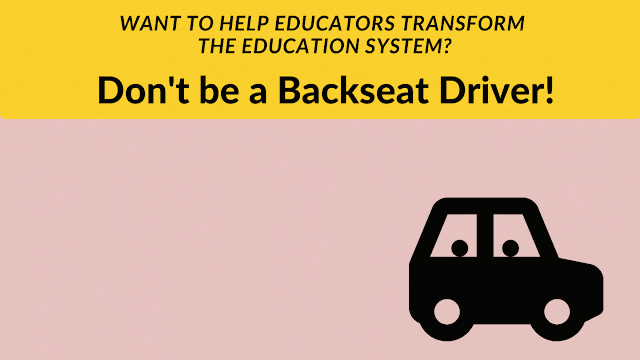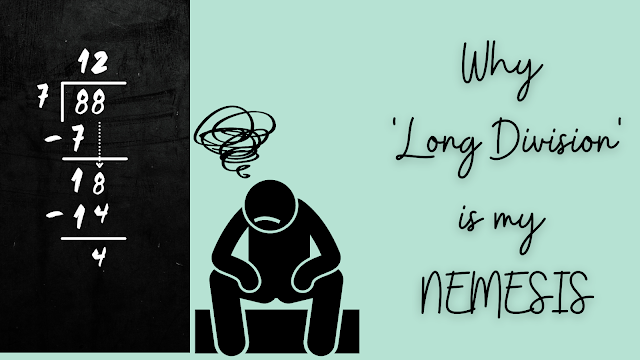Every teacher striving for inclusive classrooms must know these 6 fundamental ideas about learning
The idea: An individual's learning experience is impacted by several environmental, physiological and socio-emotional factors. As educators, we must be aware of the impact that they can have on learning if we are to achieve 'Neurodiversity as the norm'.
I spent 5 years working at a special education school. That wonderful experience and community has dramatically impacted my outlook on learning and life. This 3 Part blog is me taking stock of the important principles I have learned (1) About Beliefs (2) About Learning (3) About Teaching. Maybe some of them will be useful to others too!
This is Part 2 - On Learning
Here is the link to Part 1 - On Beliefs
Here is the link to Part 3 - On Teaching (coming soon)
My experiences in Special Education brought to light some very important fundamentals about learning. We had few students but with very diverse learning profiles. I learned so much about things in the environment or brain that can impact learning. It is important for all educators to be aware of these basic ideas if we are to ever achieve Neurodiversity as the norm.
Nature is full of 'Spectrums' not 'Categories'
Physiological factors can interfere with learning
The way individuals interact with sights, sounds, touch, smell can be different and often can be a factor that interferes with their ability to learn effectively. This one was not intuitive to me at all because I have always been a person who could tune everything off when I needed to study. I have studied for engineering exams in loud coffee shops with good success. But this is not the case for all learners because everyone processes this sensory input from the environment differently. And sometimes an itchy t-shirt label or a small buzzing noise from outside a classroom window is being perceived by the body as a massive sensory input, due to which very little attention can be diverted to learning at that time. And while complete visual or auditory impairment may be easier to notice, many sensory processing difficulties are quite invisible to the unkeen observer.
Socio-emotional factors can interfere with learning
Emotions and Anxiety interfere with learning. This is one all of us have surely experienced. Someone put you on the spot and asked you to do a mental calculation quickly, and suddenly it all goes blank in your head. Or a heated argument triggers anger in you and you suddenly are unable to express yourself coherently. Or a family member has a worrying health situation at home and you just can’t focus on anything in class. Personal, Social and environmental factors can be responsible for anxiety. It was fascinating to understand the science behind this. Here is my modest explanation - fear, stress, anxiety, anger all trigger a part of the brain called the amygdala, which is responsible for emotional regulation. When triggered, the amygdala sends the body into a ‘fight or flight’ response by releasing stress hormones, which as the name suggests is readying the body to run/escape from or fight against danger. In this hyper-alert state, quick automatic decisions must happen, so power is taken away from your prefrontal cortex - the part of your brain responsible for planning, thinking and rational decision-making. Naturally, learning cannot happen optimally in this state.
Language is a critical tool for cognitive development
This is going to sound ridiculously obvious but I must talk about the foundational role of language in cognitive development - not just for complex thinking but even for simple cognitive function. As a ‘maths person’ I grew up having a preference for visuals and models and an aversion to text. So I don’t think I gave language its due credit until well into my career as an educator. Language serves as a tool for making meaning, developing ideas, problem-solving and guiding action. Language includes not just our spoken words but our internal language too - the self-talk that goes on in our heads as we describe, ideate or problem-solve. My experiences allowed me to witness this in the most fascinating ways. For example, when we worked with young children with language delays, we noticed that they also had difficulty with simple planning. If asked to navigate a simple obstacle course, they were often unable to even begin. However, when provided with language for thinking ‘First ….., Next…., Then…’ they were suddenly able to do it. These interactions helped me recognize the central role played by language in thinking at all levels - from simple to complex.
Cognitive overload can interfere with learning
Our brains have a limited capacity for processing information i.e. limited working memory. Receiving or handling too much information at the same time makes it hard to think clearly. Today’s world has more information available than ever before, and at the same time has led to learners having to process more complex ideas earlier on in school. This can easily lead to cognitive overload. On the flip-side, if used well, the many tech tools available for accessing and organizing information could help us reduce cognitive overload and significantly aid our ability to process information in more sophisticated ways.
Neuroplasticity is amazing
A simple but life-changing idea for me. The brain has the capacity to grow throughout life. It is like a muscle, the more you exercise it in an area/ practice a skill, the stronger it gets in that area. If you stop using that skill, your ability in that area weakens. When I was younger, I definitely underestimated the power of deliberate practice and attributed far too much innate ability. Research in this area is still emerging, we seem to have only scratched the surface, but there already are a number of fascinating studies (read this London taxi cab driver study that beautifully illustrates how the brain grows with cognitive exercise) to support this idea.





Comments
Post a Comment